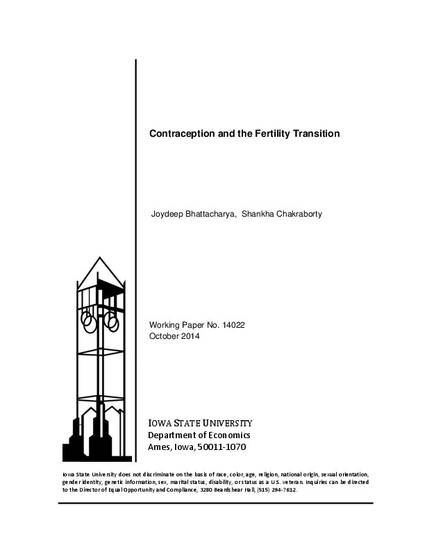
Inspired by the historical English experience, we modify the Beckerian paradigm of fertility by incorporating costly, societal influence on contraception. Heterogeneous, generationally-linked households choose between ‘traditional’ and ‘modern’ contraception. The modern has a higher fixed but lower variable cost of averting childbirths. Initially the rich adopt the modern, which unleashes society-wide diffusion. Eventually everyone switches, lowering fertility further and across households. Hastening the switch is falling child mortality. Quantitative experiments suggest contraception was a vital link between the historical mortality and fertility transitions, though not the latter’s proximate cause. Implications for more recent transitions are discussed.
Available at: http://works.bepress.com/joydeep_bhattacharya/44/

This article is published as Bhattacharya,J., Chakraborty, S., Contraception and the Demographic Transition. 2016 The Economic Journal; 127; 2263-2301. DOI: 10.1111/eco j.12431. Posted with permission.